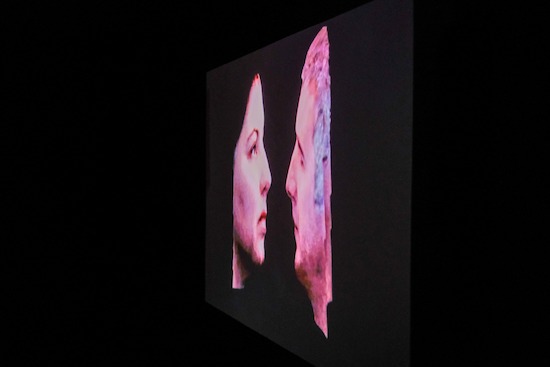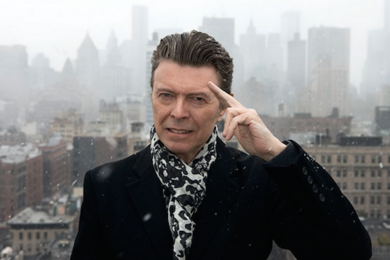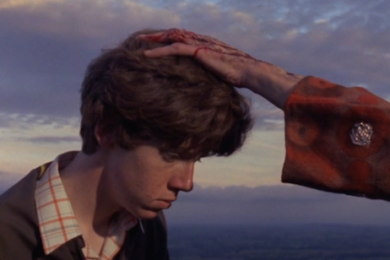1. Dan Oki and Sandra Sterle, 1997., 2017. All photos by Sanjin Kaštelan
The stage: a dim and dreary early autumn evening in Hala V’s courtyard at the Nikola Tesla Technical Museum in Zagreb. The props: a roughly heart-shaped tapestry made out of lonely hearts ads, a rose, and its petals. The protagonists: performance artist, painter, and musician Josip Pino Ivančić and an unnamed “fancy girl”. The scene: a broken-hearted Ivančić caresses and cradles a rose, tears it apart, and sings Public Image Ltd’s ‘This Is Not a Love Song’ to the flower and to himself. The girl glues torn petals onto the collaged heart. In the end, it all burns. In the end, it is a love song.
Like the Extravagant Love art festival that it closes, the Beuysian …this is not a love song… happening is ambiguous and self-conflicting. Repurposing John Lydon’s jaded satire, Ivančić begrudgingly finds love in negation and rejection. Never by directly looking for it, but by tracing edges and examining interactions, lovingly ridiculing the absurdity of the human condition. Yet for all their depth, this performance and Ivančić’s White Blue Honey and (s)Teran tribute to Mediterranean “lover boys” – honey, wine, lipstick, blood, and sperm laid out on table linen crafted from newspaper ads in search of kindred spirits – are the most straightforward and heteronormative artworks at Extravagant Love, the expansive fifth edition of Kontejner collective’s triennial Extravagant Bodies festival.
“I have wanted to take a closer look at the practice of otherness, this fragile performance, and how it can express love, intimacy, empathy and desire”, Jenny Hval writes about the idea behind her album The Practice of Love. Extravagant Love curators Klara Petrović, Luja Šimunović, and Stahl Stenslie frame their selections around a similar understanding of love as a pervasive weak nuclear force, a precondition of being human. Like Hval, they collect art which probes the boundaries of love, tinkers with the weird forms it can occupy, and expands its limits beyond the normal. And in true Hegelian fashion, love cannot exist without the Other.
The installations, performances, and talks at the festival are thinly interconnected. They all touch and prod and examine, but avoid presenting answers. True to name, pieces are often extravagant and provocative, but never banal nor grandiose. Among them, the inherently interactive and participatory works become most successful. A day before the official opening of the festival, Croatian expat Siniša Labrović subverts to extremes the dilettantism of Benjamin Bennett’s Sitting and Smiling by spending twenty-four hours smiling at people at Zagreb’s central square. Surrounded by a cantankerous society, his Love of Smiling outgrows endurance art and turns into a radical expression of love, but also a stand against the apathy and passivity of positive thinking. “We cannot blame our problems on anyone else if we are not ready to smile all day long”, he facetiously explains.
Later, during the festival’s opening night, Slovenian artists Betina Habjanič and Maja Smrekar explore love beyond the confines of the human race. Habjanič’s visually impressive Love Act: Marche Funèbre sees her sew together parts of a butchered pig in an attempt to bring a loved one back to life. An acutely affective and visceral piece, Love Act has a wide focus: it questions food ethics, thanatological cognitive dissonance, and the clichés of eternal love by transcending the divide between life and death. Employing a more hopeful tone, Smrekar’s work envisions a future in which a human-canine and other hybrid families are a welcome possibility. In her ongoing K-9_Topology: Hybrid Family project, she lives with and nurses puppies, attaching to them physically and emotionally and challenging the exclusivity and status quo of anthropocentric love. Tellingly enough, it is the latter performance that attracts the media spotlight and animal welfare concerns.
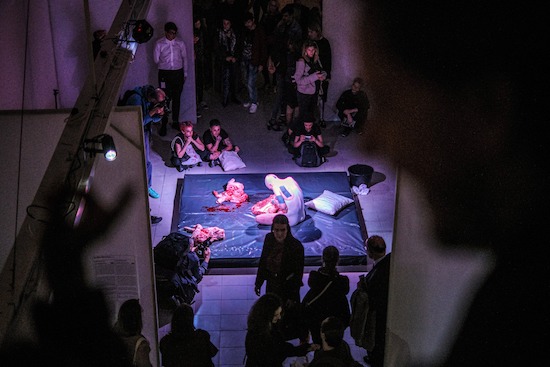
2. Betina Habjanič, Love Act: Marche Funèbre, 2019
While Smrekar and Habjanič stretch love into trans-species territories, Julischka Stengele and Branko Milisković deconstruct physical borders between individuals of our own sort, baring themselves literally and figuratively. During Not for Oscar, Stengele sits naked surrounded by audience. She smooches her body, trying to cover as much of it with lip prints. She tries, succeeds, fails, and tries again. Here, the trace of each kiss is an exaltation of the Otherly and an affront to fetishisation like the kisses left on Oscar Wilde’s tomb at the Père Lachaise Cemetery. But unlike those destructive and moribund marks, Stengele’s skin is a living and loving canvas, especially in the performance’s second phase which invites the audience to negotiate consent and leave a kiss print of their own.
It is a warm and connective experience which denies just one participant – a brash, overconfident gentleman whose incredulity in the face of rejection uncovers the ever-present internalised privilege and toxic masculinity. While Milisković remains clothed during his rendition of The Song of a Soldier on Watch (inspired by Hans Leip/Lale Andersen’s ‘Lili Marleen’), the one-on-one cabaret show is an intensely intimate contact. Here, the barriers between two strangers, the Thespian and the spectator, are obliterated, leading to ephemeral but deep connections amidst waves of melancholy, dystopian thoughts.
If Extravagant Love performances and talks benefit from the disparity of their subjects, the installations on display at the Hala V occasionally suffer from it. The twenty-odd exhibits intersect technology and traditional artistic approaches and bridge philosophy with fascinations facilitated by post-digital artefacts. Meanwhile, their mutual connections remain loose. Boris Debackere and Jerry Galle’s VENTRILIO, for example, uses a robotic ventriloquist puppet from the darkest nook of the uncanny valley to verbalise the machine’s view of love as understood through dating sites, social networks, and the web. Like a Freudian mirror, VENTRILIO projects back at us a stream of pornographic content which might at least lessen AI fear mongering. Because if Roko’s basilisk should ever arise, it will surely be in the shape of a pimp.
Elsewhere, Vitar Drinković’s Heart Tube and Marta de Menezes’s Anti-Marta employ technological artefacts to bond bodies on a biological level, through heartbeats and skin grafts and chemical fluctuations. While interesting experiments that wouldn’t feel out of place in Kontejner’s other festival series, Device_art, both fall short of meaningfully contextualising these mundane bio-mechanical processes. Biotech tattoos embedded with DNA and pulse-sharing fitness devices have, after all, already been commodified. In contrast, the organic works of Charlotte Fuentes and Zane Cerpina blur the lines between mimesis and anti-mimesis into life art proper.
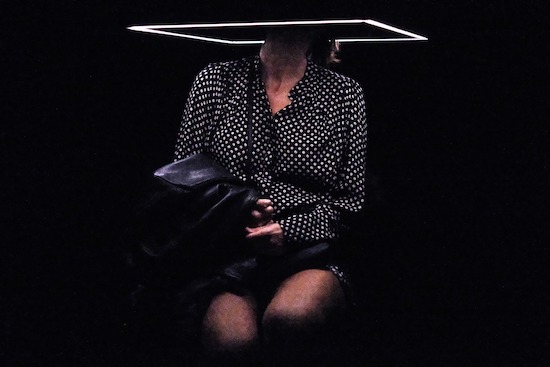
3. Jens Christian Bo Johansen & Sara Jurinčić, Erotic Inquiry No. 1, 2019.
In the case of Fuentes’s Love Is Somewhere Else, a real life obsession with Richard Brautigan and Bas Jan Ader preceded the art and became the focus of a semi-fictional project which documents and retraces the (final) steps of the American poet and Dutch artist. The narratives of the festival’s largest and sparsest exhibit force the visitor to follow along a path of clues and footprints, stepping into Fuentes’s shoes and reliving her experience through notes, letters, Google Maps printouts, videos, and tiny boats lost at sea. For as she fell in love with Brautigan’s and Ader’s stories, we might fall in love with hers. Still, the search continues, because it can never truly end.
Simultaneously conceptualising love as a carnal, tactile experience and an indelible psychological mark, Zane Cerpina bit her partner over and over for three years and immortalised each bite with a photo, now collected as The Book of Love Bites – an intimate love letter to another body. “With time I must bite harder to leave my mark”, she writes. “After my death, you would like to cut it out?”, the partner responds. We should all find someone to bite, I think.
Ultimately, the representation of love at Extravagant Love is strikingly flawed and extravagant just enough. As a whole, the art feels liberated, so much so that when viewing Darko Vukić’s Electroplating the Baby, I’m somewhat surprised that the artist didn’t use a real foetus as part of the exhibit. Even as Petrović and Šimunović later explain how they restrained themselves due to the conservative nature of Croatian society and the desire to appeal to a larger audience, the festival leaves an unbridled, uncompromised taste behind. I’ve come to expect nothing less from Kontejner.

